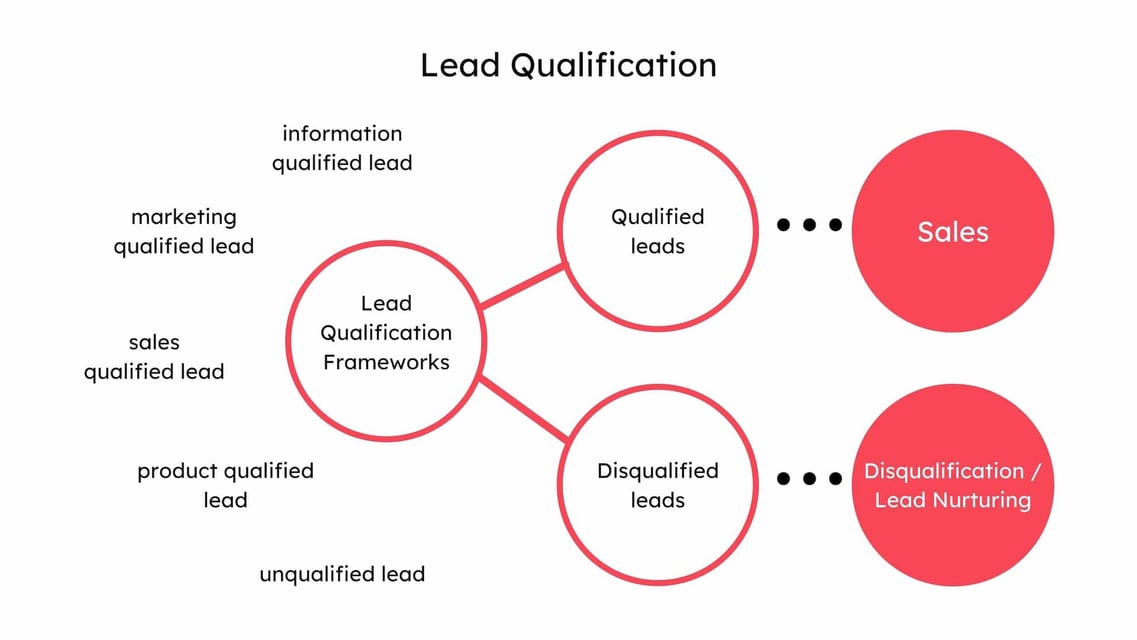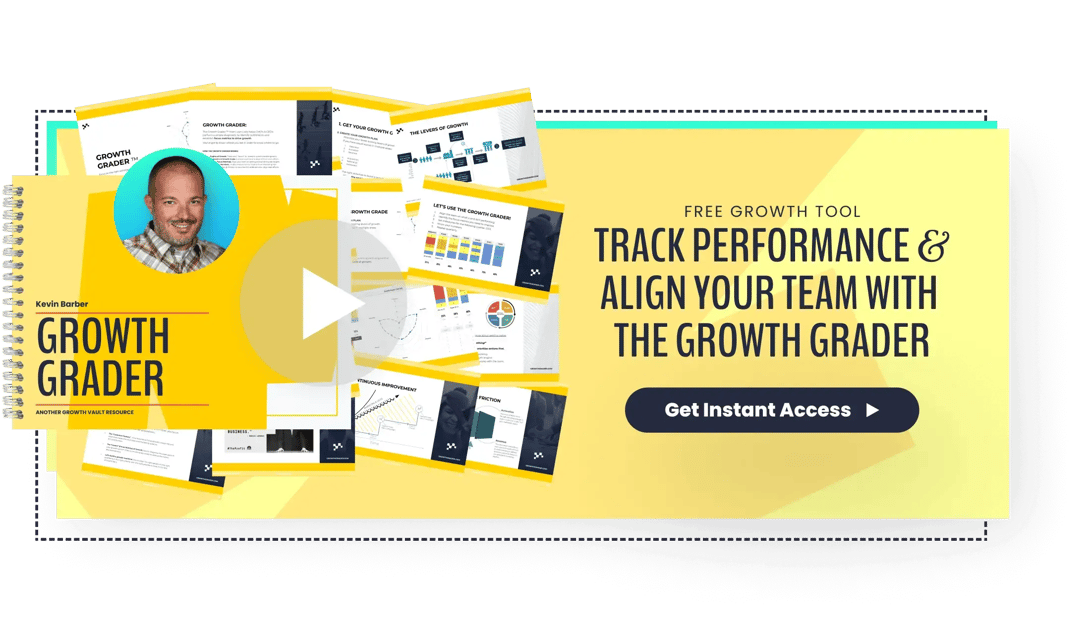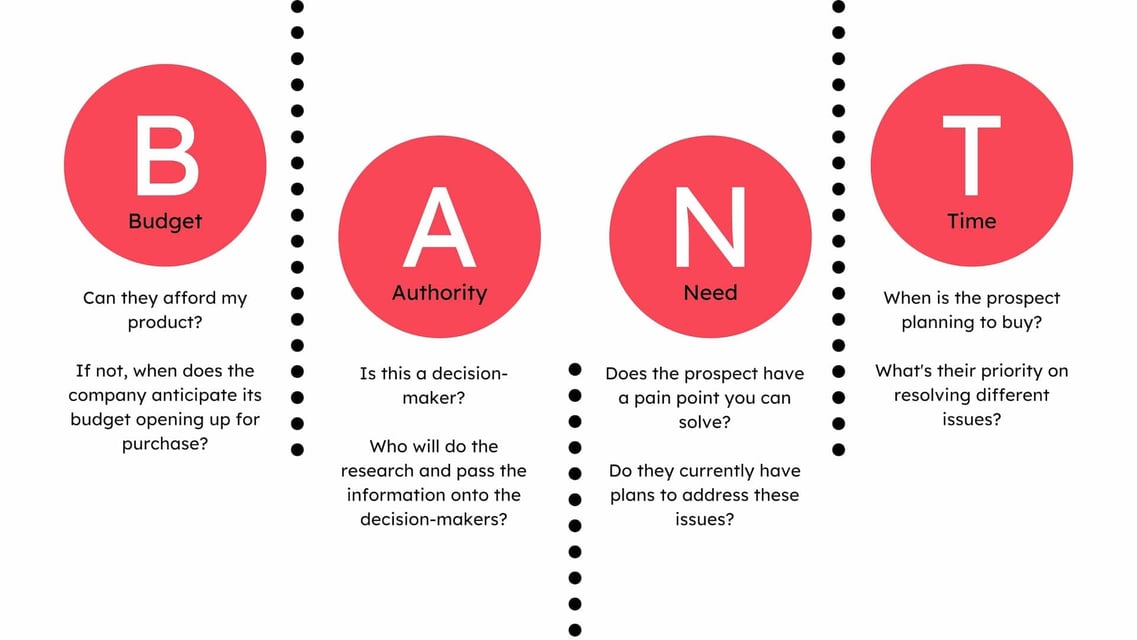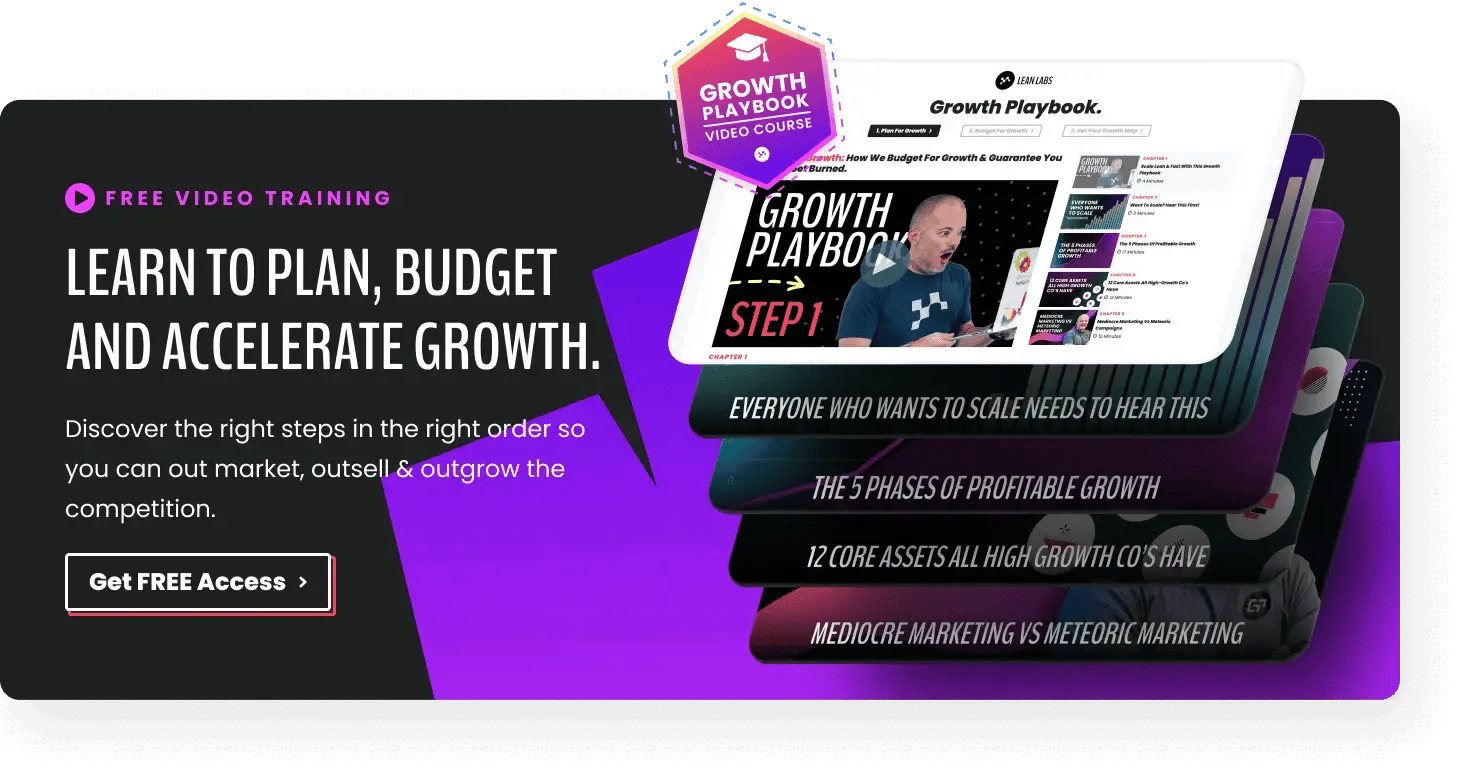The good news is that you have many methodologies for how to qualify a contact. They are called lead qualification frameworks. A side effect of that good news is that you have to learn them all to choose the one that fits your company best.
Let’s look at the most effective lead qualification questions and their pros and cons, so you can choose the right Lead qualification framework for your company.
There are many lead qualification frameworks – from the oldest BANT to the newest NOTE. They all focus on the different customer data records. That is why choosing a CRM tool that keeps all the necessary information is essential.
The oldest, the most popular, and B2B-centered. This framework is all about the buyer’s budget.
BANT was developed in the 1950s by IBM to educate new sales reps quickly. It stands for Budget, Authority, Need, Timing.
If a lead meets 75% of your criteria, your sales team can consider the prospect qualified.
BANT might not be suitable in situations where a lead doesn’t have an exact budget in place. It will be helpful if a person knows what they've paid for in the past and ‘what's all this for.’
BANT is easy to remember and can shorten your sales cycles. It also provides immediate lead disqualification.
T. The founder and CEO of A Sales Guy Inc, Jim Keenan, thinks BANT provides no value to the prospect. He points out that people become irritated with the seller-focused approach.
Another feature that is frequently criticized is the timeline. It might push sales reps to disqualify prospects who aren’t ready to commit straight away. So, you lose leads that can be converted in the long-term perspective.
2. MEDDICC
This lead generation framework is about long sales cycles and the value your product can bring to your prospect. It stands for Metrics, Economic Buyer, Decision Criteria, Decision Process, Identify Pain, Champion, and Competition.
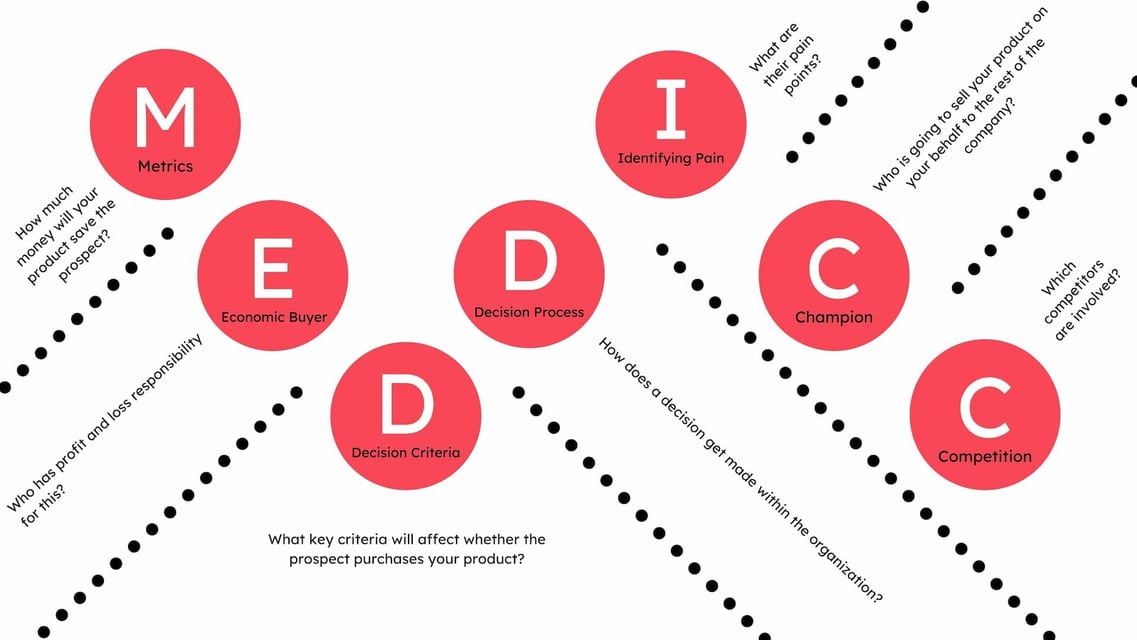
MEDDICC was created in the early 1990s in Parametric Technology Corporation (PTC), now a SaaS company.
The main goal of its creators Jack Napoli and Dick Dunkel was to help sales reps sell more. By using this framework, they had over 40 quarters of continuous growth.
The framework questions how much information you have about your leads. It focuses significantly on learning about the contacts and building a deep knowledge of their organization and decision-making structure.
Use MEDDICC if you:
- own a B2B company (an enterprise) with a long sales cycle (like machinery or new software);
- don't know what problems your lead is trying to solve;
- cause a shift in the company’s processes (transition from paper or Excel to CRM, for example)
- sell a new version of an existing solution within the prospect’s organization;
- want customers to buy products with a significantly higher price;
- are not provided with all facts about the money component.
Pros of using MEDDICC:
- a more accurate pipeline;
- understanding the changes every lead meets in the customer journey;
- gaining more right leads;
- fewer deals will be lost.
Cons of using MEDDICC:
- An immense amount of time spent on research and detective work;
- CRM is necessary because there is a lot of data to track and manage.
Enough with MEDDICC. Let’s take a look at the most modern frameworks.
3. GPCTBA/C&I
This brainchild of HubSpot is B2B-centered, detailed, and aimed to align your company with the prospect's goals and resources.
The framework stands for Goals, Plans, Challenges, Timeline, Budget, Authority/Negative Consequences, and Positive Implications.
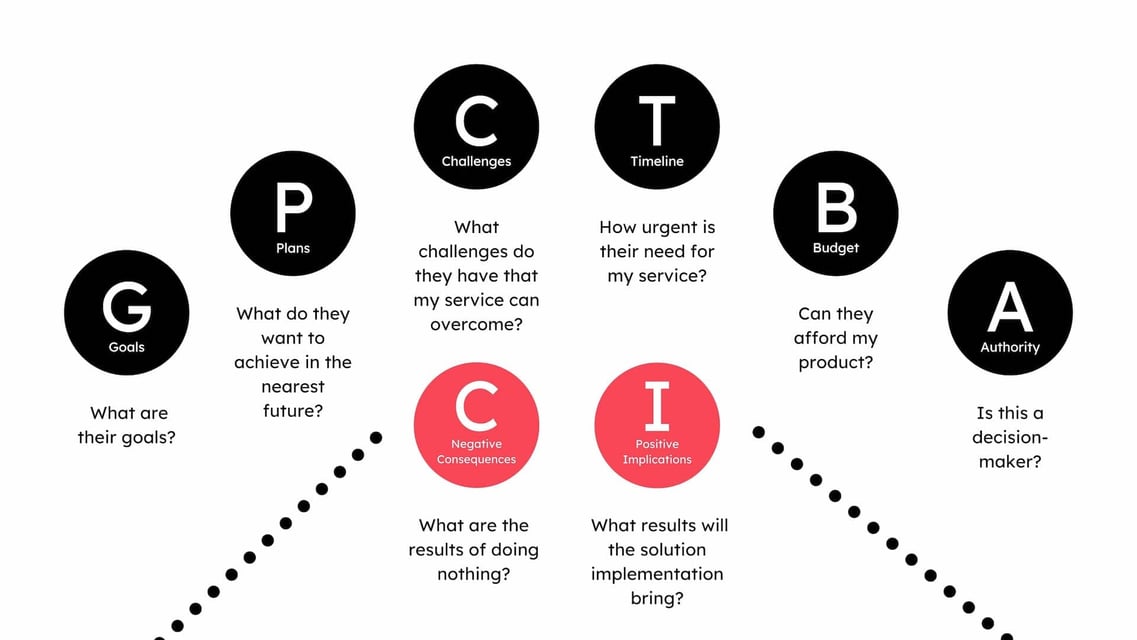
Because people become more informed about different products and services, the basic intro isn’t enough for them. That is why GPCTBA/C&I requires your team to add value on top of product knowledge. It puts the sales rep in an advisory role with an educational mission.
Your team needs to know everything about the prospect’s business model, their goals, and how you can help with a big picture vision.
When not to use GPCTBA/C&I:
- if your team is small (because of the complex qualification process involved);
- if you have thousands of contacts to qualify (it’s too complicated);
- If you lack resources in your sales team.
When to use GPCTBA/C&I?
Implementing this framework should be a no-brainer if your sales team has enough time and resources. Focusing on the needs and goals of your prospects can increase customer satisfaction.
This framework is a good fit for startups, small and medium-sized businesses (SMBs).
4. ChAMP
This framework puts consumer needs (challenge) in the foreground. That is to say, you solve the problem and then sell a solution, not vice versa.
ChAMP acronym stands for Challenges, Authority, Money, and Prioritization.
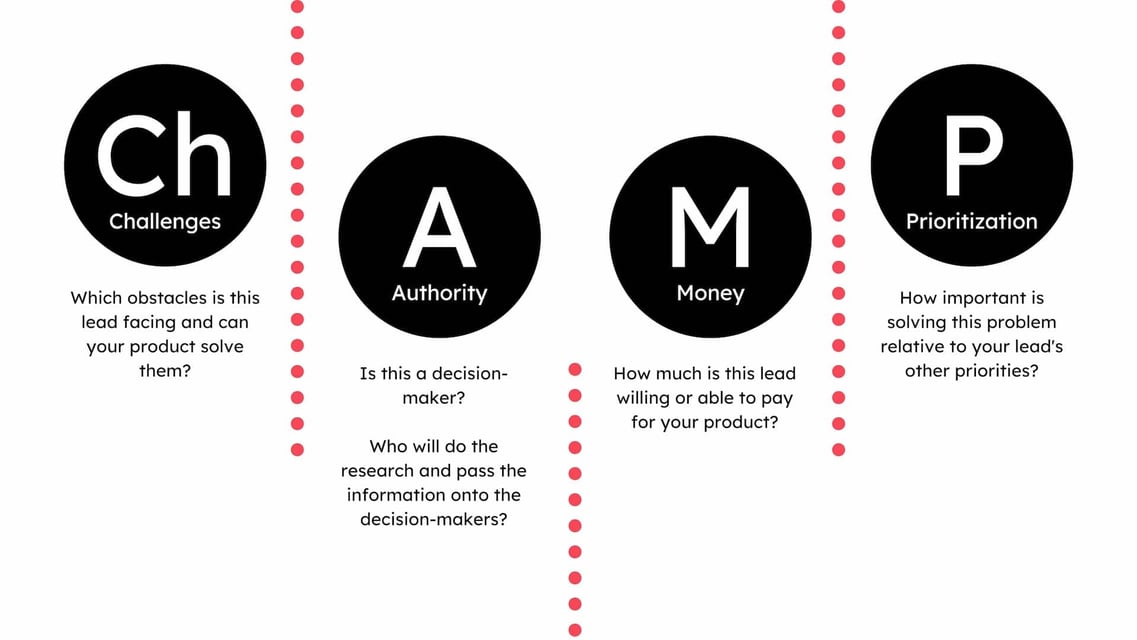
ChAMP was built for a modern solution provider in a current B2B sales landscape. It intends to speak the correct language, at the right time, to the right people, to find a high-value lead.
It’s similar to BANT. Each stage of this framework was somehow covered in BUNT. Nevertheless, in ChAMP, challenges preface the budget.
Your sales team can more accurately qualify prospects and discover solutions to their problems by focusing on challenges.
When to use ChAMP?
CHAMP can be helpful for sales teams in both small (especially startups and SaaS Tech) and large companies. The primary condition here is that they should be able to play a long game focusing on a better understanding of their target audience.
When not to use ChAMP?
It’s often a time-taking method (slower than BANT and ANUM), so sales teams should be clear whether using it for qualification can have a positive ROI for their business or not.
Cons of using ChAMP:
- It doesn’t work for organizations that do not have enough understanding of the people they are targeting.
- ChAMP can lead to a delay in the sales cycle.
- It’s missing components such as Decision Making Criteria, Decision Making Process, and Competition. Obtaining this information is vital in the early stages of the lead qualifying process.
Pros of using ChAMP:
- fast lead disqualification;
- you can easily integrate it into your Sales Process or Business Development Strategy;
- it creates a safe space for the lead to reveal the challenges they face so that you can propose a more accurate solution to them.
5. FAINT
It forces leads to focus solely on the product itself when deciding if they like it or not.
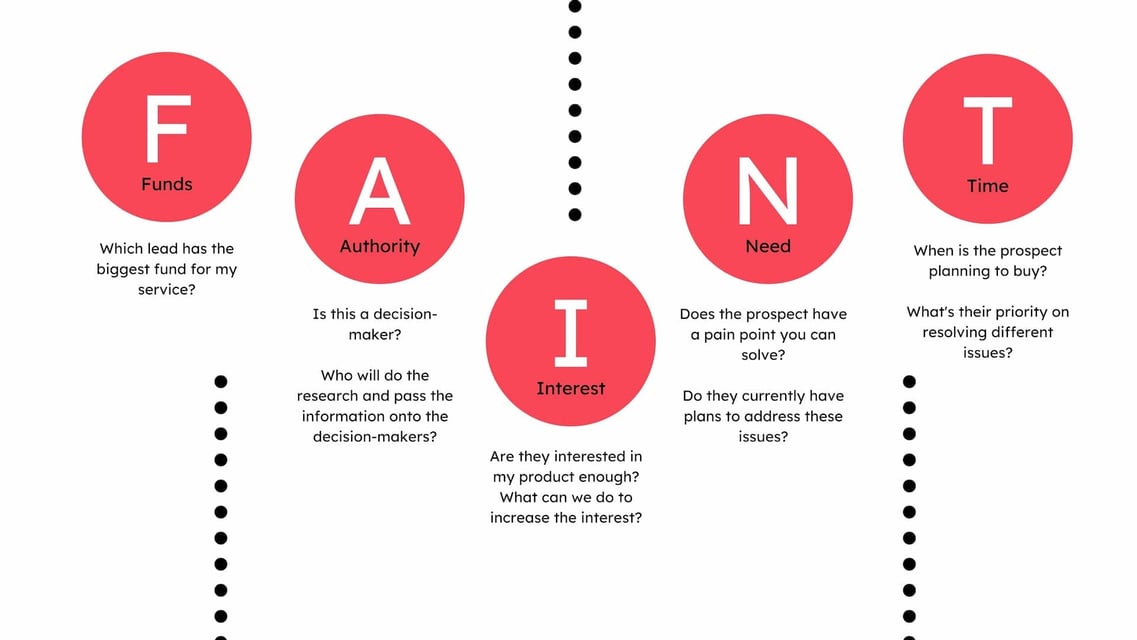
The framework was developed by Mike Schultz, the president of the RAIN Sales Group, to improve the BANT approach.
BANT doesn’t include unplanned purchases, including a wide range of demand drivers, emphasizes Schultz.
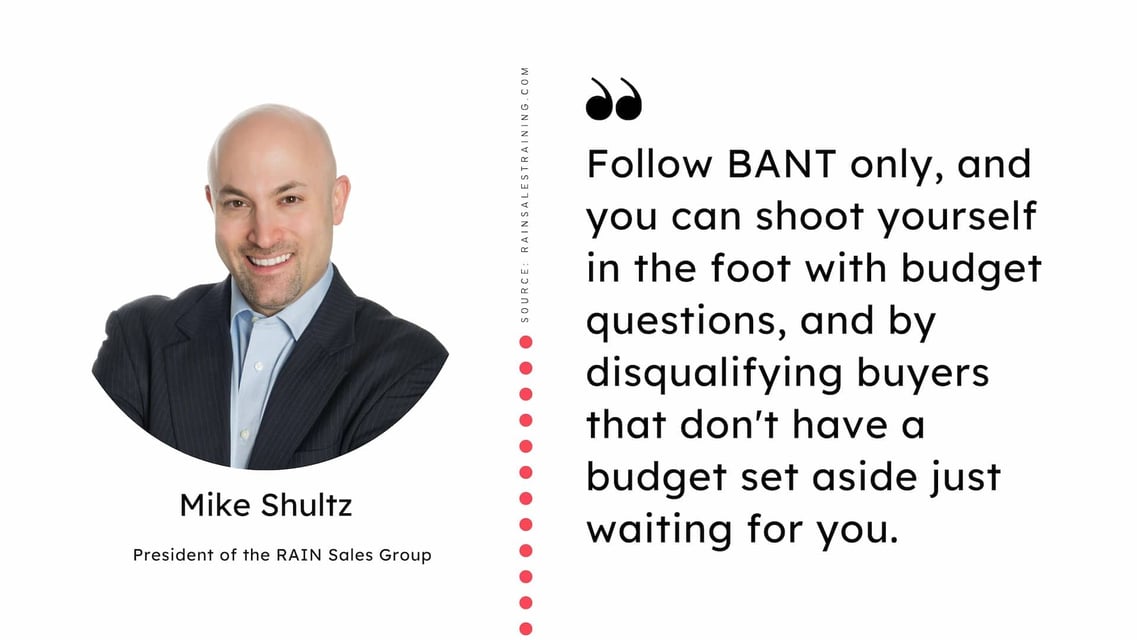
He advises focusing on organizations and buyers that have the funds to buy your product even if they may not have a budget. ‘Sell where the money is,’ concludes Schultz.
The second difference between this framework and BANT is the presence of the Interest section. It pushes you to generate interest from the buyer in learning how to achieve a better reality than the one they have today.
If questions are asked correctly, you’ll move the prospect to a state of curiosity centered around your solution.
When to use FAINT?
- if your leads have big bank accounts;
- if they often make unplanned purchases;
- if the prospects don’t have a predefined budget.
Pros of using FAINT:
- to convert leads into prospects faster than with BANT;
- to use your time and resources effectively.
Cons of using FAINT:
- Your team can waste their time discussing the lead’s interest in a solution they may not even know they need.
- The Interest section might be itself a waste of time. You already can gain the prospect’s curiosity by having conversations around their Needs and pain points.
- You’ll lose leads with small funds even if the product would genuinely help them.
6. ANUM
It’s a modernization of BANT that puts Authority first and is more customer-centric. Put simply, it ensures you are speaking to the correct person first and lefts the money question until the end.
The framework’s acronym stands for Authority, Need, Urgency, and Money.
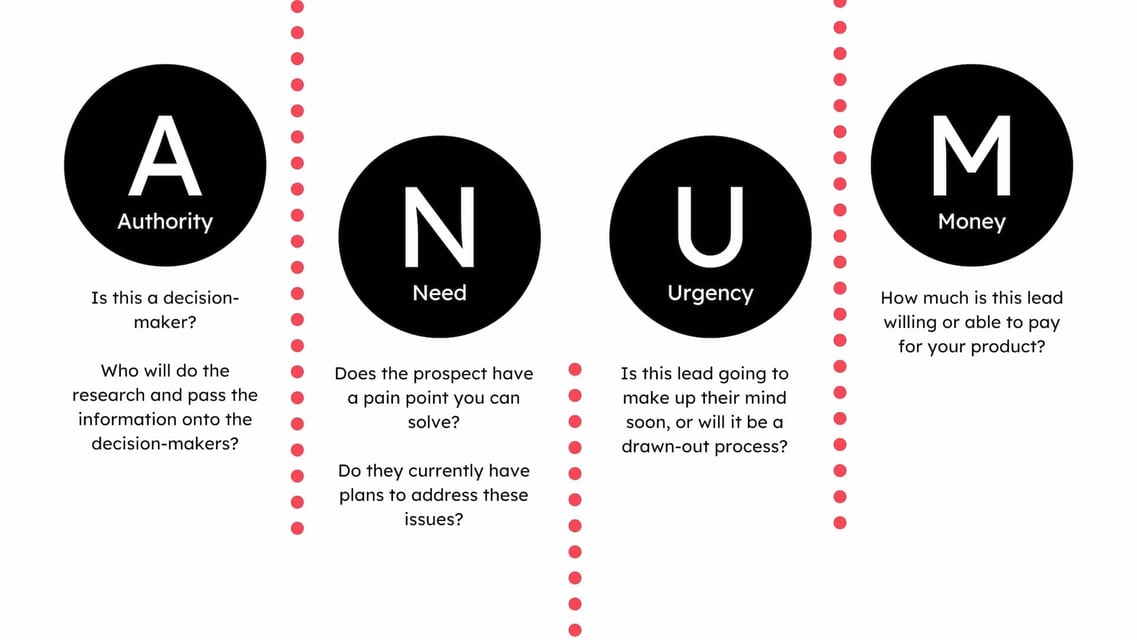
When to use ANUM?
ANUM can be used by nearly every company. However, it may be better suited for larger organizations with a complex decision-making hierarchy.
It’s a good fit if you want to save time and effort.
One of the big ANUM’s pluses is that it gives you clarity about the potential customer and if you’re moving in the right direction or not.
When not to use ANUM?
But be wary that not everyone who is a decision-maker has the time to research solutions – so you might miss out on some sales opportunities if you’re too quick to qualify (and eliminate).
The cons of using ANUM is that its logic would suggest you stop follow-up with the lead if they are not the decision-maker.
7. NOTE
NOTE is a big contender of BANT. This buyer-centric framework determines the probability of closing deals with a lead.
It stands for Need, Opportunity, Team, and Effect. The methodology was pioneered in 2016 by Sean Burke, then CEO of KiteDesk. He wanted to change their seller-centric approach to one more customer-friendly. And none of the existing frameworks met the needs of their clients.
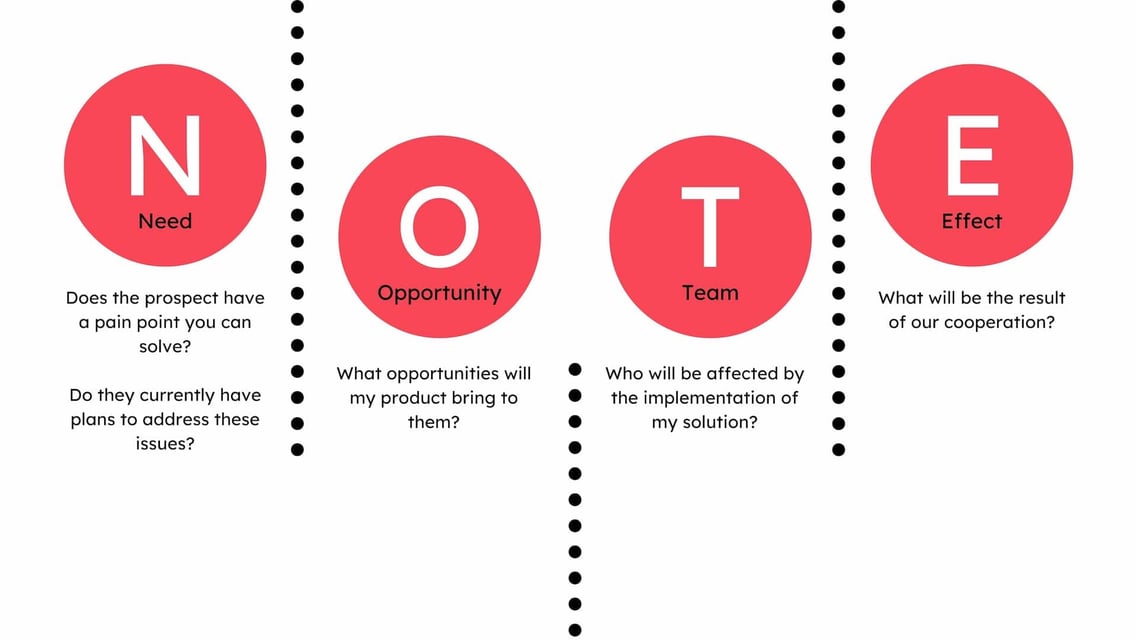
NEED: The first step in NOTE is Need. In this step, the salesperson helps a lead uncover if they need a product or service. If their need doesn’t align with the value proposition, the sales rep should stop follow-ups.
During this stage, you can’t even mention your product. Instead, focus all attention on trying to help the person with whom you’re speaking.
Though, the NEED is not enough to enter the buying journey. The next important feature to cover is Opportunity.
OPPORTUNITY: It’s all about the outcomes your prospect is looking to achieve. And again: this isn’t about your product or service.
The Opportunity is similar to the MEDDIC metrics stage since it deals with prospects’ opportunities once they get the solution you’re selling them.
When you finish the opportunity stage, it is essential to ask if the opportunity is large enough for your lead to put effort and time into it.
Only after they say YES, should you move on to the TEAM step.
TEAM: The third stage is centered around who within the prospect’s company is impacted by this deal.
Your solution has to improve somehow the lives of a group of people in your prospect’s organization. You need to follow up with everyone who will potentially use the solution you’re offering.
EFFECT: And the final step is Effect. It emphasizes the measurable results that the client needs to justify their decision.
Pros of using NOTE:
- better at qualifying prospects;
- respectful relations with a lead even if they won’t convert;
- It allows sellers to nurture their leads.
Cons of using NOTE:
- your team might waste time on ‘journalist’ work
- it’ll overload a small sales team with a huge number of tasks;
- The framework is not practical without CRM.
TDLR: Which Lead Qualification Framework Is Best For Me?
Once you're familiar with each of the lead qualification frameworks including, BANT, MEDDICC, GPCTBA/C&I, ChAMP, FAINT, ANUM, and NOTE, the next step is to discover which framework matches your goals and to try it out!
If you try a framework that doesn't work for your specific business then consider adjusting it if you have tried a framework that reflected your business strategy best but didn’t perform well. You can take it as a basis and add or remove something to make it fit. As a rule, this is what happens – these frameworks are not applied literally but modified to suit your own needs.
There’s always time to dig deeper and discover what works best for you because a successful qualification framework increases your sales and strengthens customer relationships.

